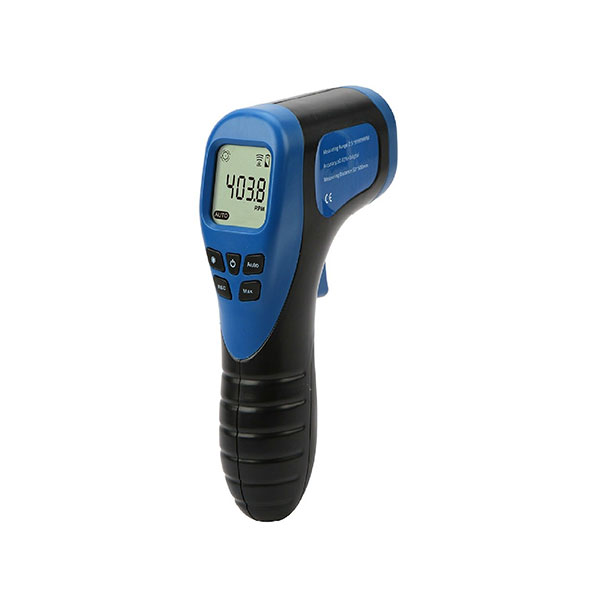The Significance of a Tachometer in Checking Engine Speed and Efficiency in Automotive Applications
In the world of automotive design, the tachometer stands as a pivotal instrument in the motorist's collection, giving a straight window into the inner workings of a car's engine. Beyond its feature as a plain scale of changes per min (RPM), the tachometer offers as a crucial tool for enthusiasts and professionals alike, providing real-time insights into engine performance and health and wellness.
Value of Checking Engine RPM
Checking engine RPM, or changes per min, is a critical aspect of automotive upkeep and efficiency analysis. Engine RPM straight associates with the speed at which the engine's crankshaft rotates, indicating exactly how rapidly the engine is running - tachometer. By keeping track of RPM, mechanics can evaluate the health and wellness of the engine, spot prospective problems, and fine-tune performance. An irregular RPM analysis might signify problems such as engine misfires, malfunctioning ignition system, or issues with the gas delivery system. Constantly high RPM analyses can show hostile driving practices or the need for a greater gear shift to boost gas effectiveness.
Furthermore, monitoring engine RPM is necessary for performance analysis in racing and high-performance lorries. Preserving optimum RPM degrees is vital for achieving peak power outcome and acceleration. Racers commonly use tachometers to guarantee they are running within the optimal RPM range for maximum efficiency. In summary, keeping an eye on engine RPM is not only crucial for detecting concerns but additionally for optimizing engine performance in numerous automotive applications.

Benefits of Real-Time Information
In automobile applications, real-time information plays a crucial role in offering immediate insights into the performance and problem of the car. By constantly keeping an eye on numerous criteria such as engine rate, temperature level, fuel usage, and a lot more, real-time information uses many advantages that add to improved effectiveness and security on the road.
Additionally, real-time data promotes performance optimization by providing prompt feedback on driving behaviors and engine effectiveness. Vehicle drivers can change their behavior in real-time based on this details to achieve far better fuel economic situation and extend the life-span of their car.

In addition, real-time data plays a crucial role in contemporary automotive diagnostics, allowing technicians to rapidly detect and deal with breakdowns. This leads to minimized Read Full Report downtime, reduced maintenance expenses, and inevitably, boosted general lorry reliability and durability (tachometer). By using the power of real-time data, automobile stakeholders can make educated choices that favorably impact both the performance and long life of the vehicle
Effect On Equipment Shifts
The tachometer plays an essential role in optimizing equipment changes by giving real-time engine rate information to the motorist. When coming close to the redline on the tachometer, it indicates the motorist to upshift to stop over-revving the engine and you can find out more triggering possible damages.
Additionally, the tachometer aids in accomplishing smoother gear transitions, specifically in hand-operated transmissions. By monitoring engine speed, drivers can execute equipment changes at the optimal RPM range, lowering snagging movements and reducing wear on the transmission parts. This accuracy in gear changes not just improves driving comfort yet likewise contributes to sustain performance.
Enhancing Fuel Performance
Offered the vital role the tachometer plays in maximizing gear shifts for efficiency and engine health, it straight contributes to optimizing fuel performance in auto applications. By supplying real-time feedback on engine rate, the tachometer assists vehicle drivers in preserving the most effective RPM variety for gas economic climate. When drivers constantly monitor the tachometer and readjust their driving routines accordingly, they can stay clear of unnecessary gas intake triggered by over-revving or carrying the engine.
Additionally, the tachometer aids vehicle drivers recognize the most fuel-efficient equipment to be in at any given minute, preventing the engine from working more difficult than required. In final thought, the tachometer serves as an important tool in improving fuel efficiency by promoting optimal driving practices and identifying areas for improvement in the vehicle's look at here performance.

Making Best Use Of Engine Long Life
The tachometer's duty in keeping an eye on engine rate and performance contributes in guaranteeing the longevity of automotive engines. By making use of the tachometer successfully, motorists can enhance engine longevity via conscious RPM administration. Regularly revving an engine too expensive can bring about extreme deterioration on crucial components, such as the pistons, shutoffs, and bearings. In time, this can result in lowered engine efficiency and potential breakdowns. Keeping an eye on the tachometer allows vehicle drivers to remain within the recommended RPM array for their car, preventing unneeded strain on the engine and expanding its lifespan.

Conclusion
To conclude, the tachometer plays a vital role in checking engine speed and efficiency in automobile applications. By giving real-time data on RPM, it enables effective equipment shifts, boosted fuel effectiveness, and taken full advantage of engine long life. This tool is crucial for preserving optimum engine performance and making sure the overall performance of a lorry.
Comments on “How a Tachometer Helps Monitor Engine Health and Efficiency”